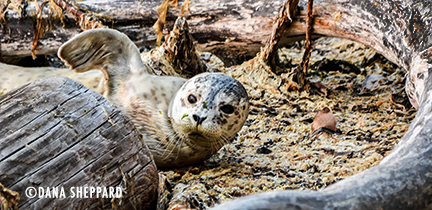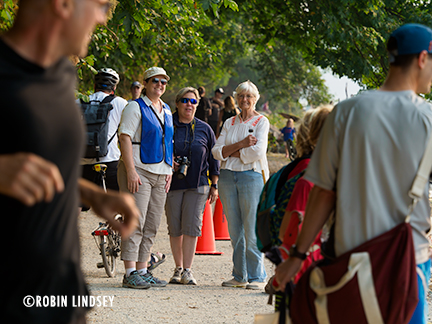First seal pup of the season visits Lincoln Park
Aug/09/17 08:26 AM

First Responder Dana arrived on scene to find a tiny, velvety pup nestled near the woody debris, high on the beach just feet from the walking path. With the help of a few enthusiastic beach-goers, including the reporting party, she managed to get a quick perimeter in place around the resting pup.

We hoped to get a peek at the belly to see if there was an umbilical cord or stub to help us determine age. Murmuring “Roll over, roll over,” Dana came up with the clever name of Beethoven. Eventually, Beethoven did roll over and we could see no stub. The pup yawned widely and showed numerous teeth that had not quite fully emerged. Assuming Beethoven was not born prematurely, he is probably about 3 weeks old and still nursing age. However, based on body weight and conditon, it was apparent that the mother had not been around, attending her pup. One of the many challenges a newborn pup faces is abandonment due to disturbance from people and dogs.
As darkness fell and Beethoven returned to the Sound, plans were put into place for a vet consultation and health assessment if the pup returned the following day to Lincoln Park or a nearby beach. Lincoln Park shoreline was scoured Monday morning, but Beethoven has not been sighted since.







